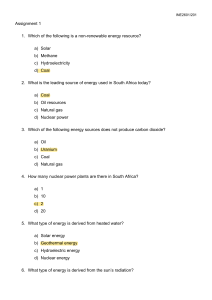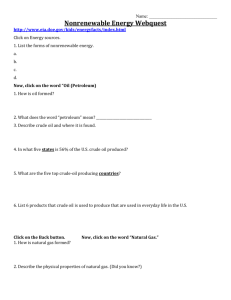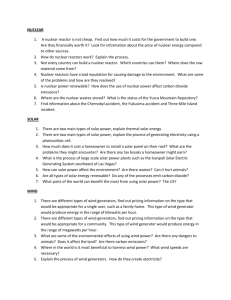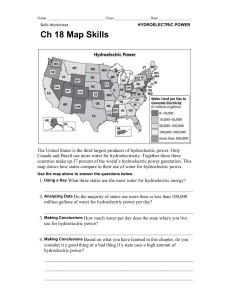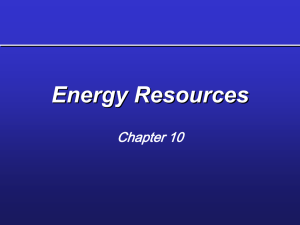Energy
advertisement
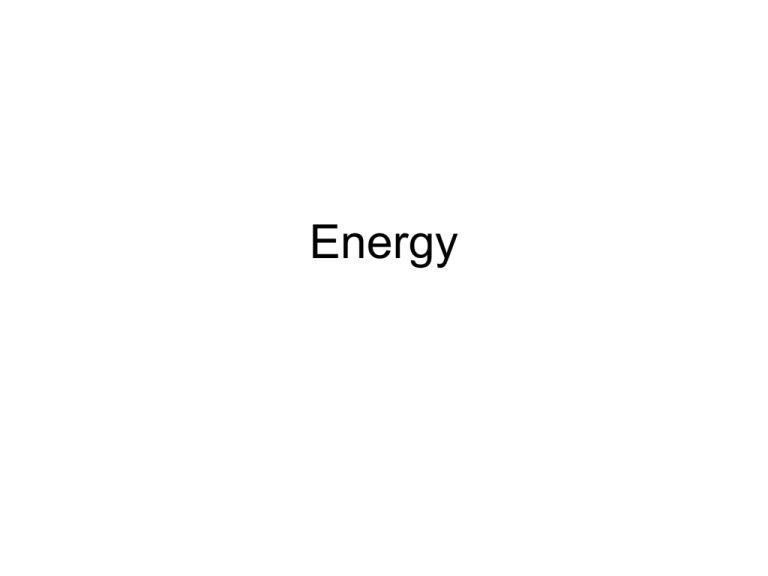
Energy Energy sources • Electrical energy • Magnetic energy – Today we know it’s “electromagnetic” combined. • Solar power (energy from light) • Energy from chemical bonds – Food, coal, natural gas, biomass, incineration, etc. • Energy stored in nucleus of atoms (Nuclear) And… Los Angeles Dept. of Water & Power sources of energy (Power Content Label) Source 2007 Biomass/ 1% waste 2006 1% 2005 1% 1% 13% <1% <1% 47% 30% 8% <1% 11% <1% 1% 48% 30% 10% <1% 9% <1% 1% 53% 26% 10% Geothermal Hydroelectric Solar Wind Coal Natural gas Nuclear 2004 2003 2002 1% 1% 11% 0% 0% 50% 24% 10% Southern California Edison Sources of energy (Power Content Label) Source 2007 Biomass/ 2% waste 2006 2% 9% 7% 1% 3% 7% 51% 20% 9% 6% 1% 3% 7% 54% 17% Geothermal Hydroelectric Solar Wind Coal Natural gas Nuclear 2005 2004 2% 11% 4% 1% 4% 14% 44% 20% 2003 2002 Energy quantities we’ll discuss in Physics 2A • Energy from forcing things to move – WORK = …. • Energy in moving things (Hydroelectric, wind) – KINETIC ENERGY: KE = … • Energy stored by gravity (Hydroelectric, water towers) – GRAVITATIONAL POTENTIAL ENERGY. PEg = … • Energy stored in stretched things – ELASTIC POTENTIAL ENERGY (SPRING P.E.) PEs = … • Heat (geothermal) – CHAPTER 9… Q = … Units of energy • • • • • • Calories (food we eat) calories (physics unit – heat. 1 Cal = 1000 cal) Joules (J) – most often used by physicists Kilowatt-hour (kW-hr) = 3600000 Joules B.t.u. – British thermal unit Thermals – 100,000 BTUs Can kinetic energy be negative? 1. Yes 2. No 0 0 1 2 3 4 5 6 7 8 9 10 11 12 13 14 15 16 17 18 19 20 21 22 23 24 25 26 27 28 29 30 31 32 33 34 35 36 37 38 39 40 41 42 43 44 45 46 47 48 49 Can spring potential energy be negative? 1. Yes 2. No 0 0 1 2 3 4 5 6 7 8 9 10 11 12 13 14 15 16 17 18 19 20 21 22 23 24 25 26 27 28 29 30 31 32 33 34 35 36 37 38 39 40 41 42 43 44 45 46 47 48 49 Fundamental relationships & definitions • Energy is the ability to cause change (damage) • We’ll focus on Mechanical Energy, which includes: KE + PEg + PEs. • We’ll ignore non-mechanical energies, such as nuclear, chemical, and “internal” (atomic kinetic). • Fundamental relationship: the energy of a system only changes if outside influences act on the system. • DME = S Wext + Qext + lightext. We’ll ignore last two terms for now. Is D KE = ½ m (vf – vi)2 1. False 2. True 0 0 1 2 3 4 5 6 7 8 9 10 11 12 13 14 15 16 17 18 19 20 21 22 23 24 25 26 27 28 29 30 31 32 33 34 35 36 37 38 39 40 41 42 43 44 45 46 47 48 49

